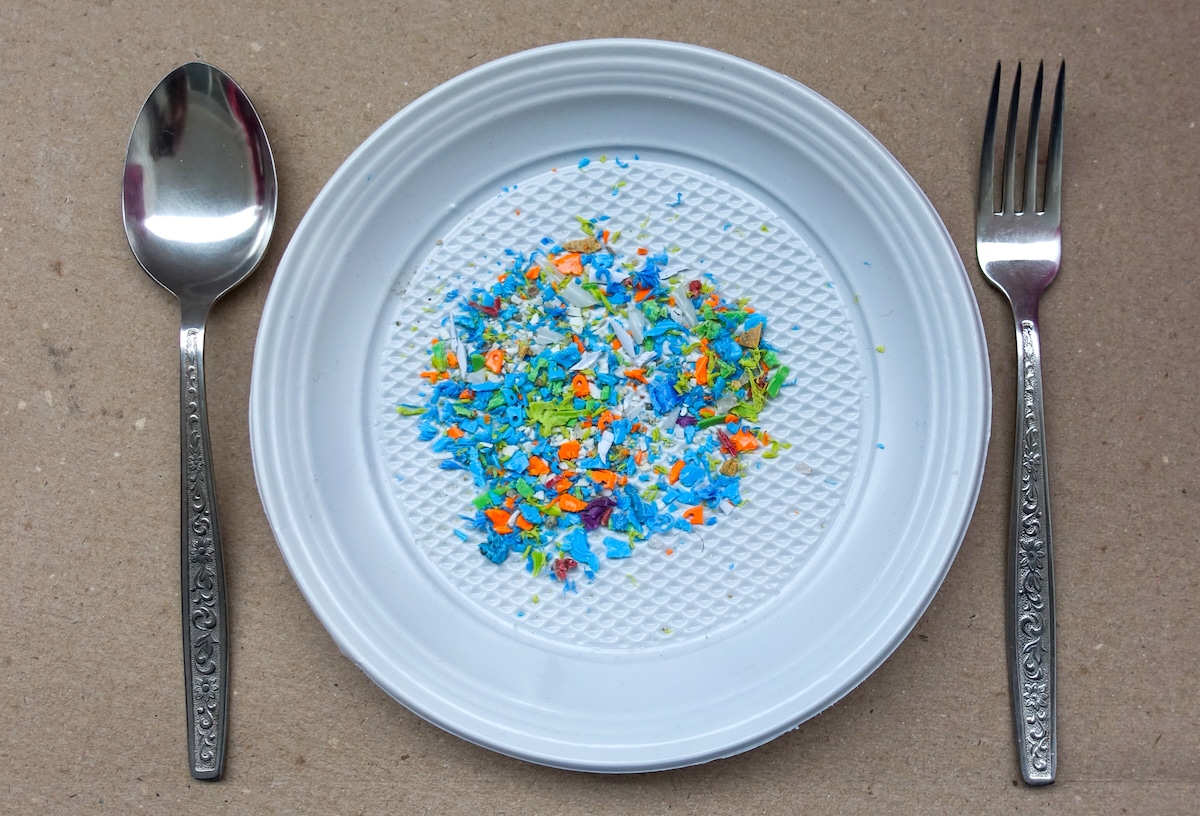Ecowatch
Ingested Microplastics Can Move From the Gut to the Brain and Other Organs, Study Finds

Scientists estimate that humans consume about 5 grams of microplastics per week, or about enough to fill a soup spoon. Svetlozar Hristov / iStock / Getty Images Plus

Why you can trust us
Founded in 2005 as an Ohio-based environmental newspaper, EcoWatch is a digital platform dedicated to publishing quality, science-based content on environmental issues, causes, and solutions.
Studies have recently detected microplastics in human lungs and blood, and previous research shows humans ingest and inhale many microplastics even at home. In 2020, scientists uncovered microplastics in human organs for the first time. Now, researchers are making sense of how microplastics that are ingested can make their way from the gut to other organs.
Researchers studied mice that were exposed to and ingested microplastics over a four-week period and found those microplastics moved to organ tissues of the brain, liver and kidney. The team also noted metabolic differences in the colon, liver and brain after the microplastic exposure. The scientists published their findings in the journal Environmental Health Perspectives.
“We could detect microplastics in certain tissues after the exposure,” Eliseo Castillo, associate professor at the Department of Internal Medicine at University of New Mexico’s School of Medicine, said in a statement. “That tells us it can cross the intestinal barrier and infiltrate into other tissues.”
Microplastics are tiny fragments of plastics. Humans have produced over 7 billion metric tons of plastic since the 1950s and every year, we produce about 400 million metric tons of additional plastic waste. Most plastics become waste in landfills or the environment, but they don’t biodegrade. Instead, they crack and break down into small pieces. These tiny plastic fragments can be found in our drinking water or food sources, such as seafood. In homes, microplastic pollution can also be found in dust, so humans may also inhale plastics.
As reported by Reuters, scientists estimate that humans consume about 5 grams of microplastics per week, or about enough to fill a soup spoon. Estimates suggest humans consume about 21 grams of microplastics per month and 250 grams per year. Over a lifetime of about 79 years, humans may consume 20 kilograms of microplastics.
“These mice were exposed for four weeks. Now, think about how that equates to humans, if we’re exposed from birth to old age,” Castillo said. “Now imagine if someone has an underlying condition, and these changes occur, could microplastic exposure exacerbate an underlying condition?”
The scientists plan to further their research by examining whether different diets, such as a high-fat diet compared to a high-fiber diet, can impact microplastic exposure and ingestion. Aaron Romero, a Ph.D. student of Castillo’s, is also researching how and why microplastics change gut microorganisms to further determine how these plastic fragments could potentially affect health.
“Research continues to show the importance of gut health. If you don’t have a healthy gut, it affects the brain, it affects the liver and so many other tissues,” Castillo said. “So even imagining that the microplastics are doing something in the gut, that chronic exposure could lead to systemic effects.”
Subscribe to get exclusive updates in our daily newsletter!
By signing up, you agree to the Terms of Use and Privacy Policy & to receive electronic communications from EcoWatch Media Group, which may include marketing promotions, advertisements and sponsored content.
Source
Disclaimer: No copyright infringement intended. All rights and credits reserved to respective owner(s).












